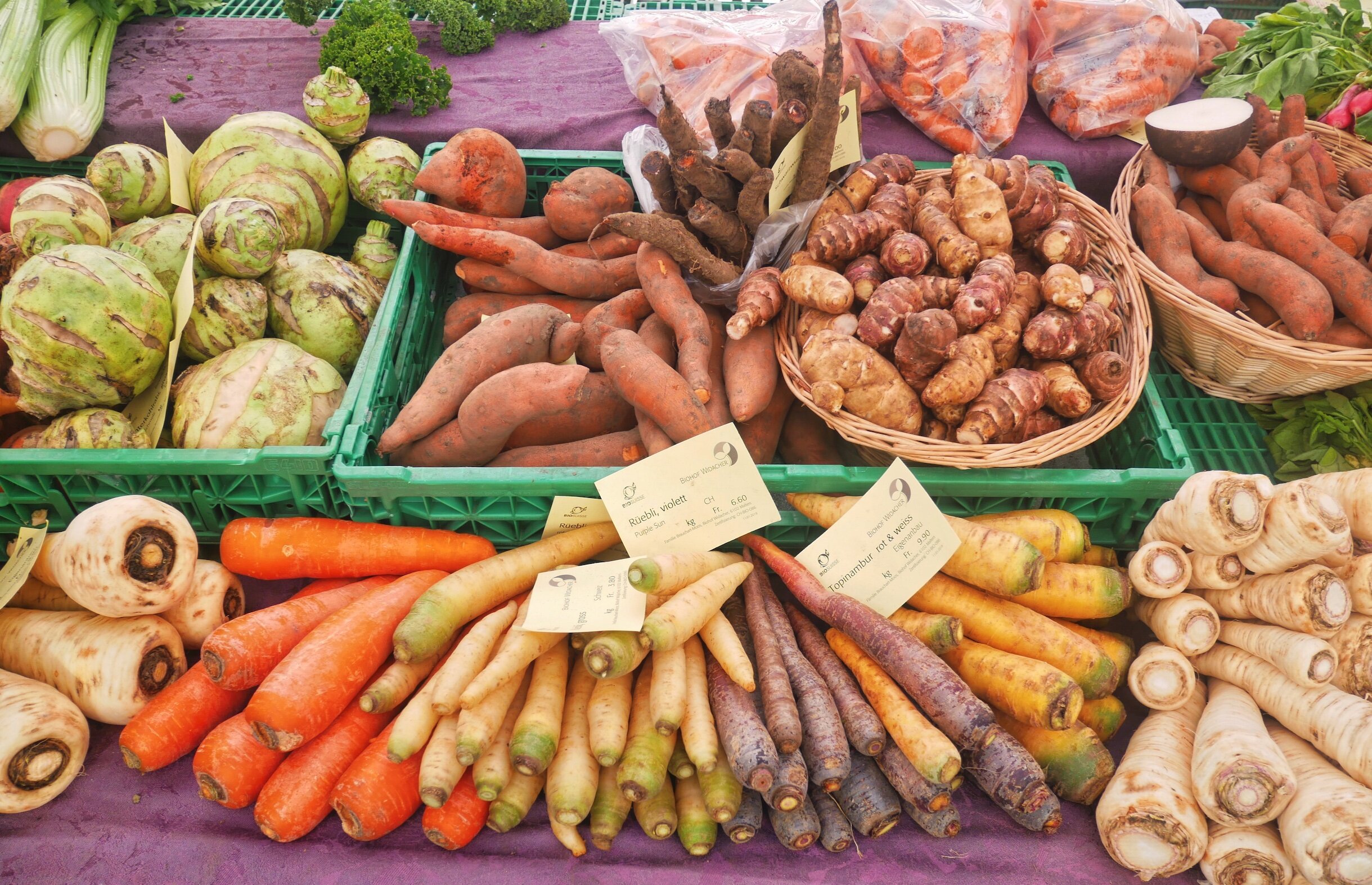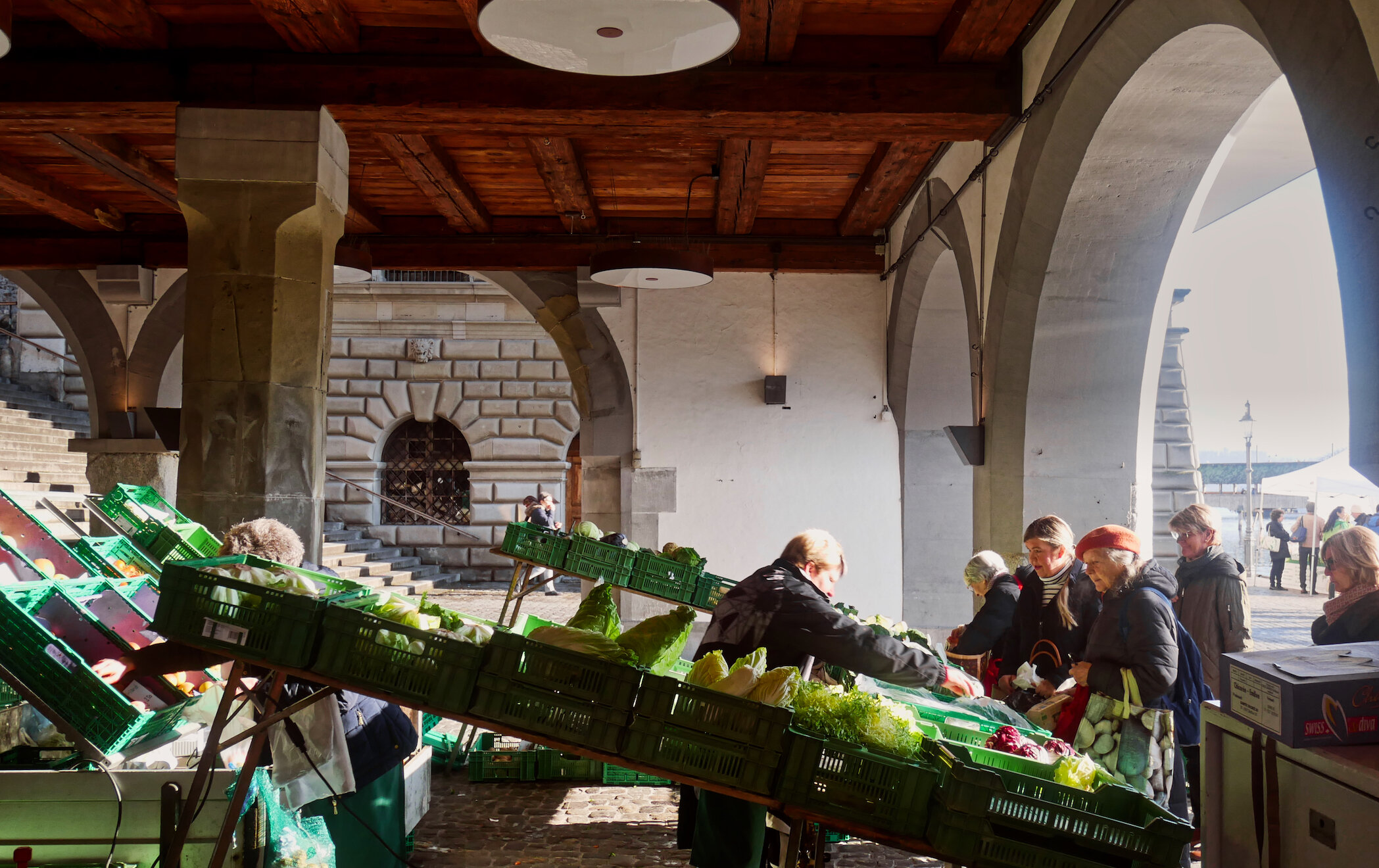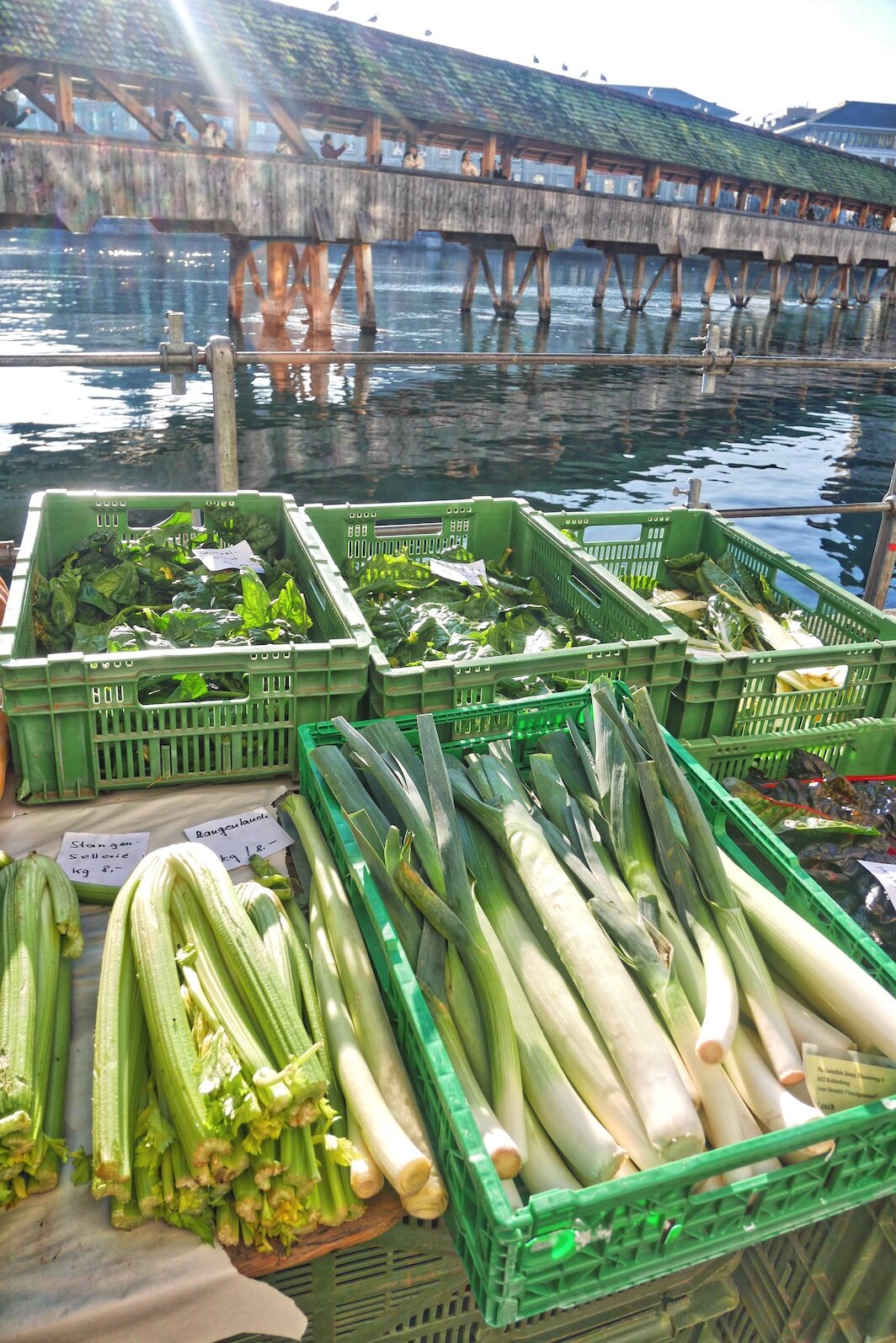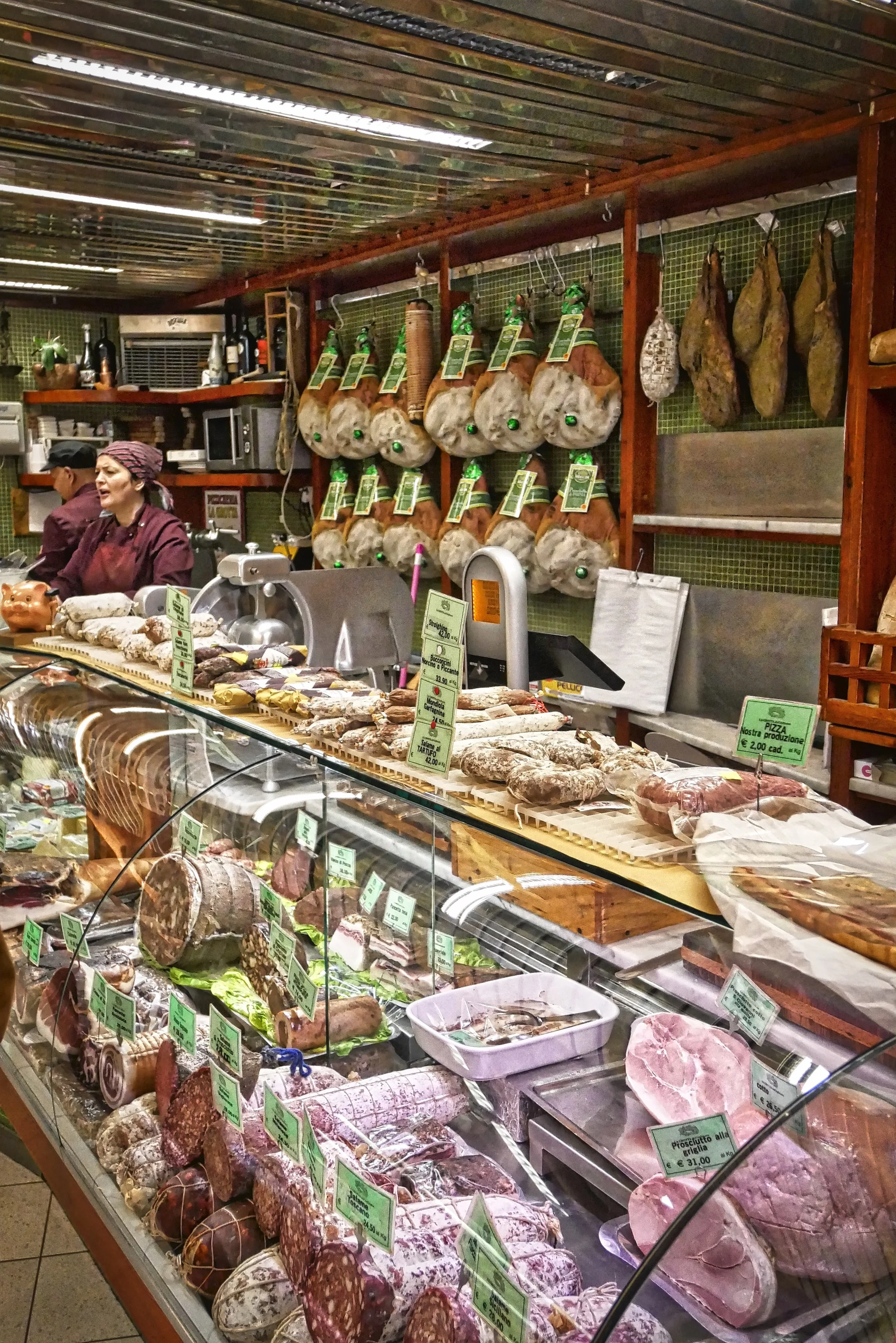The Secret of the Salads of Switzerland
If human emotions were recipe ingredients I’d sprinkle my daily dishes with plenty of surprise and inspiration.
Easy words to say, I know - especially in the dark post-festive days of winter - but you can be surprised and inspired in the most unlikely of ways or places.
The theme for this food article came to me as I strolled through the Swiss city of Lucerne recently, admiring the twice-weekly winter market that sets up by the historic riverside. The Swiss tend to be renown for their heavy winter dishes - cold-beating rostis, molten-cheese fondues, raclettes and the like - but anyone who has travelled widely in that icy country will know that the alpine salads and soups are things of wonder.
Perhaps Switzerland would not be the first country you’d name in a top-top-listing of national cuisines, but their salads and soups are among the best in the world.
When I visited the market in Lucerne last week I could understand why. The quality and variety of vegetables on the stalls was first class. The local farmers seem to be able to grow a much wider range of veg - including salads - than we manage here in the UK, despite the fact that they face regular winter temperatures far colder than ours. And it’s not because of hot-houses or poly-tunnels, I hasten to add. Clever use of sheltered south-facing slopes combined with a sensible selection of all-weather veg does the trick.
Take lamb’s lettuce (as we call it) as one example. For time immemorial this has been a staple winter-salad in the alpine countries, and they do wonderful things with the healthy green leaves. They’ve also been keen on the lumpy looking celeriac since the Romans first took it up into the mountains.
Both of these vegetables are capable of being turned into wonderful winter salads - if you know what you are doing. And the Swiss certainly seem to know their onions when it comes to the arrays of pleasant creamy, slightly vinegary, always savoury, dressings which they employ to take their winter salads to another level.
Of course, there can be no denying that the Swiss make some of the best cheese on the world - and often this is grated into a winter salad. But they also make fabulous cream, and many a salad I’ve enjoyed in the mountains has been dressed with some kind of lubricating favour-enhancer that will have ingredients from a dairy.
And, talking of flavour enhancers, I have a suspicion that some alpine chefs secretly throw a pinch of Swiss vegetable bouillon powder into their dressings. In fact, I know they do. And why not? It’s amazing stuff.
But if the use of a flavour enhancing powder out of a tin worries you, why not have a bash at making your own? If that sounds difficult or way out of your league, I’m here to tell you that making such a thing is comparatively simple, especially if you have a kitchen dehydrator the likes of which you can purchase on the internet for under £40. Alternatively you can use an oven - the plate-warning unit at the bottom of an Aga or Rayburn would be ideal.
You simply grate or very thinly slice a selection of winter veg - like carrots, leeks, onions, parsnips, a little garlic, a few large radishes - rub some sea salt (how much is up to you) into the resultant mix and turn the lot out into the drying racks or your dehydrator or on parchment above grills placed in your low-heated oven, spread thinly, and let the warmth do it’s work. Every now and again you must turn the mix over or agitate it in some way to make sure there’s no damp layer left at the bottom.
This can take eight to ten hours in a low oven, longer in a dehydrator - not that the matters in the case of the ovens mentioned or in the specialist food dryer. The ovens will be warm anyway, and the average food dehydrator uses as much electricity as a small light bulb.
When the grated veg’ mix is dry enough to snap or crumble between your fingers, simply blitz the whole lot in a food processor until, within a few seconds, it turns to powder. You can some pinches of dried herbs at this point, but be careful - you don’t want them to dominate the flavour. You can also play around with the seasoning, adding more salt if necessary, or just a tiny pinch fresh ground white pepper.
A lot of fuss to make a cupful of bullion powder you can buy for a couple of quid? Well yes, and no. For a start there will be many people who get satisfaction out of being so self-sufficient - and there will be those who love the idea of using up piles of veg that might otherwise grow weary in the cupboard before being added to the compost heap.
Certainly if I was a vegetarian or a vegan, I’d be making this sort of mix all the time. And the wonderful thing is that, if you get into the habit of making regular mixes, you can easily tweak the flavours. For example, by adding smoked sea salt or your own smoked garlic you can introduce an extreme savoury umami tang to your homemade bullion powder, and therefore to your eventual dishes. Which is a magical ability to have if you are looking at what would otherwise be a fairly bland vegan soup.
But add a hefty pinch to a creamy salad dressing and you will end up with a dish that seems to go way beyond its constituent parts. You will have people at your table saying it’s the best salad they’ve ever eaten, but they won’t quite be able to put their finger on exactly why.
It was the same for me until the time when I was staying at a tiny inn or alm, high in the mountains near Andermatt. A bunch of my fellow journalists and I were stranded up there in a blizzard, so with nothing else to do I spent the day volunteering in the kitchen and helping to keep us all fed.
That is when I saw that surreptitious pinch of vegetable bullion powder being added to the salad dressing. The innkeeper told me she’d always done it - and indeed she made large quantities of the magical powder from a wide range of vegetables growing in her garden each summer.
Clever people, those Swiss. They keep a lot of their secrets close to their chest, but unlike the contents of their famous bank vaults, this one can be shared by us all.
Swiss based salad recipes
Lamb’s lettuce - or Nüsslisalat - is also called Feldsalat, Wintersalat, Ackersalat, Vogersalat, or Rapunzel in Switzerland and parts of Germany and Austria, and is harvested harvested throughout the winter and mixed with a little chopped egg and a creamy dressing, served alongside river fish like trout or grilled chicken.
Add what you will to the lamb’s lettuce - I put in julienned carrot and celeriac, some chopped and salted radishes and a spring onion or two.
For the dressing mix…
2 tablespoons mayonnaise
¼ cup (60ml) white wine vinegar
½ cup mild-flavoured oil (like avocado oil)
1 small clove garlic
1 teaspoon Dijon mustard
¼ teaspoon salt
¼ teaspoon coarsely ground pepper
Large pinch of Swiss or homemade vegetable bullion powder
Gemischter Salat, literally translated, is a simple mixed salad where the constituent parts of have been marinated. The one I had in Lucerne contained carrot, sweet corn, sliced red onion and cucumber and julienned celeriac.
The marinade is usually a crème fraiche or mayonnaise base with vinegar to cut through the creaminess, along with fresh herbs such as dill or tarragon which are added last minute. The acid and cream work well, and the vegetable bullion powder adds the required saltiness and umami.
Dressing for my version of Gemischter Salat
60 ml creme fraiche or buttermilk
1 spoonful plain, natural yogurt (optional)
2 Tbsp. apple cider vinegar (or red wine vinegar)
1/4 tsp. Dijon mustard
1 Tbsp. extra virgin olive oil
1 tsp. honey
1/4 tsp of vegetable bouillon powder
Pepper to taste
2 Tbsp. chopped tarragon








